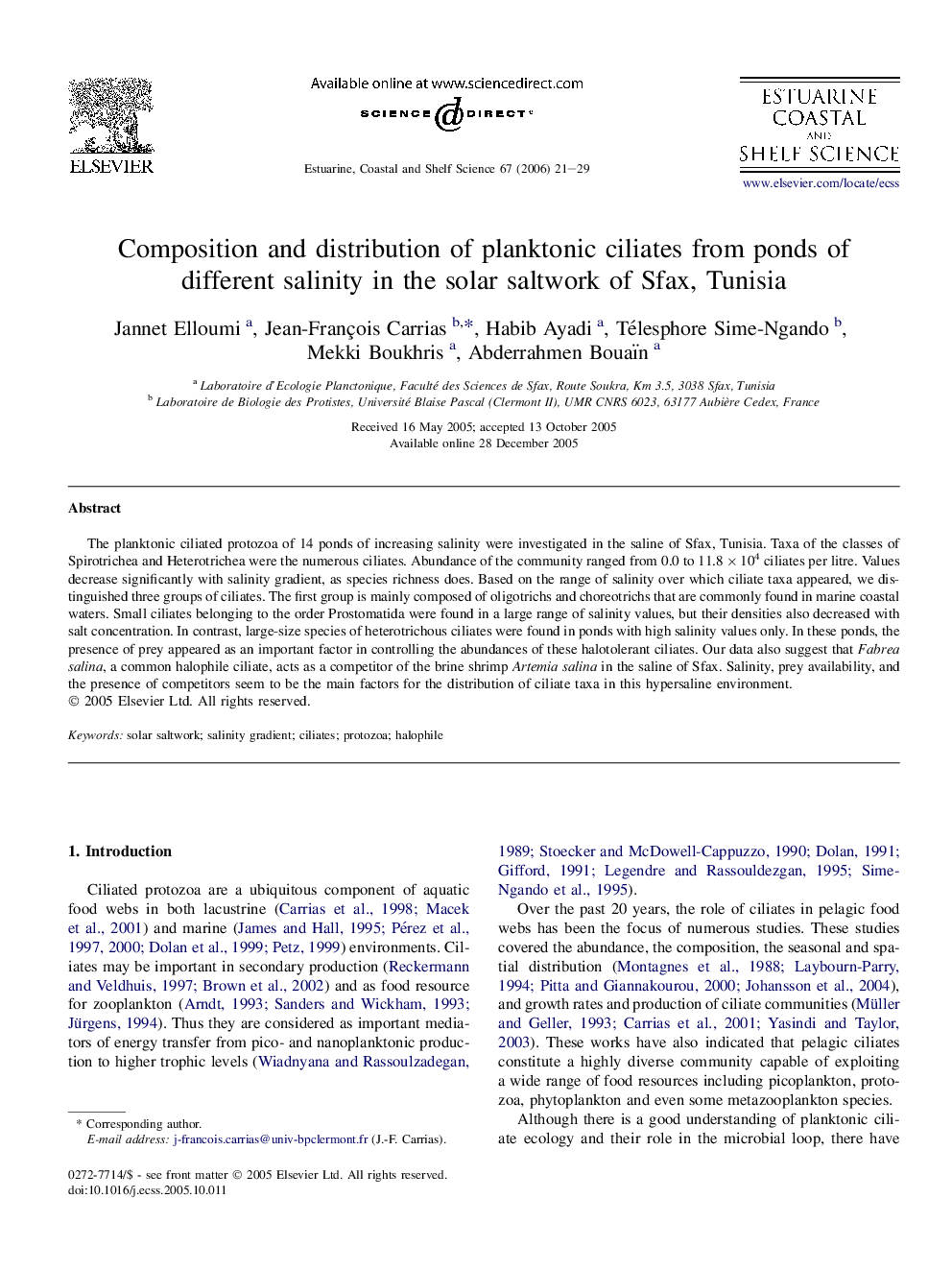| Article ID | Journal | Published Year | Pages | File Type |
|---|---|---|---|---|
| 4542317 | Estuarine, Coastal and Shelf Science | 2006 | 9 Pages |
The planktonic ciliated protozoa of 14 ponds of increasing salinity were investigated in the saline of Sfax, Tunisia. Taxa of the classes of Spirotrichea and Heterotrichea were the numerous ciliates. Abundance of the community ranged from 0.0 to 11.8 × 104 ciliates per litre. Values decrease significantly with salinity gradient, as species richness does. Based on the range of salinity over which ciliate taxa appeared, we distinguished three groups of ciliates. The first group is mainly composed of oligotrichs and choreotrichs that are commonly found in marine coastal waters. Small ciliates belonging to the order Prostomatida were found in a large range of salinity values, but their densities also decreased with salt concentration. In contrast, large-size species of heterotrichous ciliates were found in ponds with high salinity values only. In these ponds, the presence of prey appeared as an important factor in controlling the abundances of these halotolerant ciliates. Our data also suggest that Fabrea salina, a common halophile ciliate, acts as a competitor of the brine shrimp Artemia salina in the saline of Sfax. Salinity, prey availability, and the presence of competitors seem to be the main factors for the distribution of ciliate taxa in this hypersaline environment.
